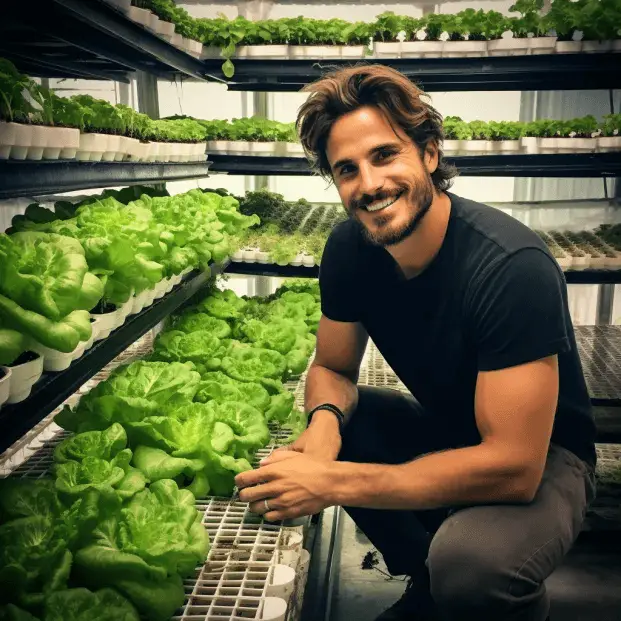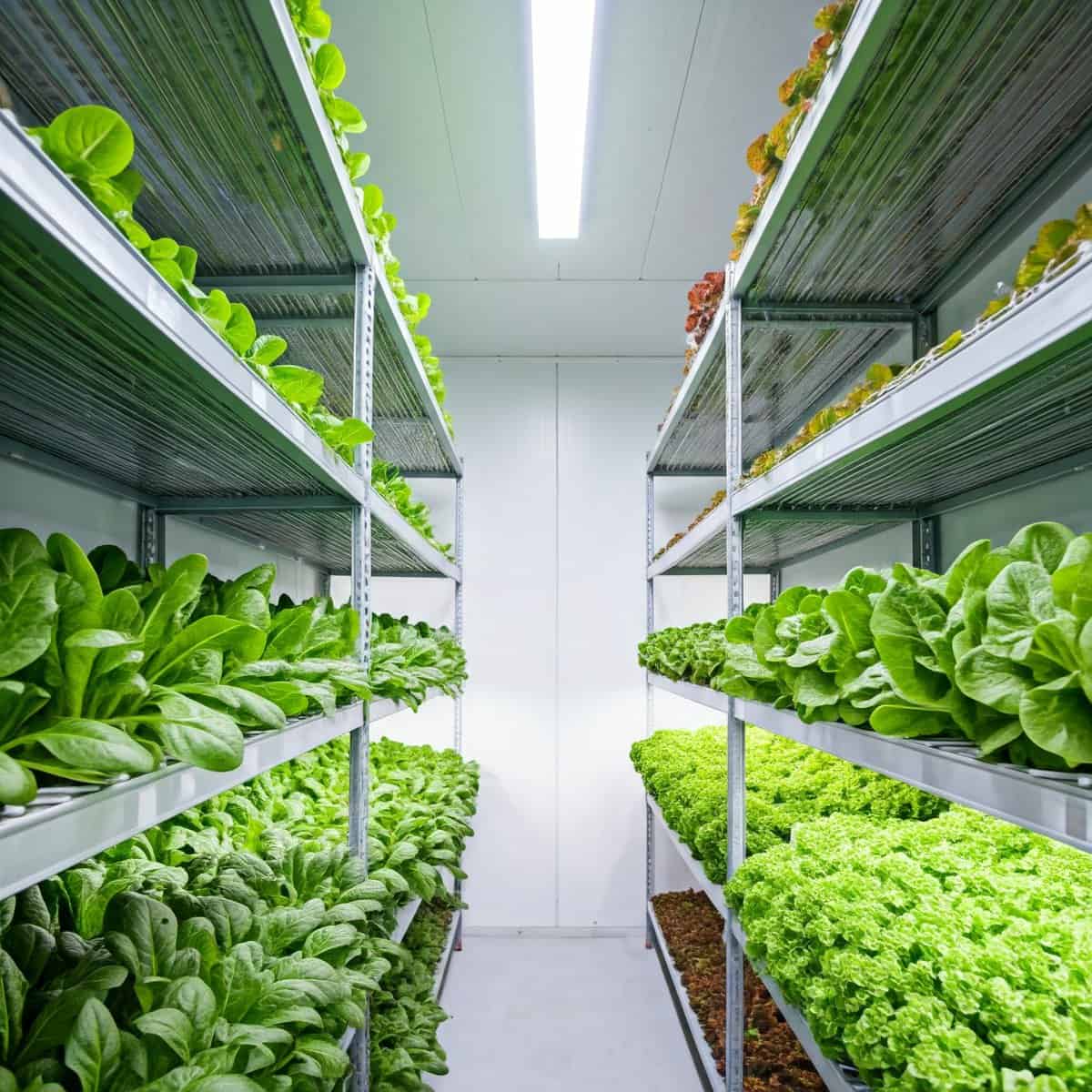Cold rooms can be tough for growing plants. My first try at cultivating herbs in my chilly basement didn’t go well. My plants just drooped, looking sad. But then I discovered lights! These lights are like sunshine for your plants. They help them thrive, even when it’s freezing outside.(1)
You can position the lights a few inches above your plants to give them the energy they need. Plus, you can set timers to make it easier. So, if you want a thriving garden in your cold room, keep reading to explore how these lights can transform your space!
Key Takeaway
- Grow lights help plants get the light they need, even in cold rooms.
- Different types of grow lights work better for different plants.
- Monitoring temperature and light duration is key for healthy plants.
Understanding Lights for Cold Rooms
In a cold room, lights can transform the space into a green oasis, providing the light plants need to photosynthesize and stay healthy. Without enough sunlight, plants can become pale and weak, but with this lighting, they thrive.
These lights offer plants the “nutrient” of light, allowing them to grow even in cold, dim conditions. The right light doesn’t just affect color and size; it impacts overall health. They also help regulate temperature.
- Cold rooms, typically below 65°F (18°C), are tough for plants, but grow lights can help keep them comfortable.
- LED lights are energy-efficient, while fluorescent lights are affordable and good for small setups.
- Incandescent bulbs offer extra heat but aren’t ideal for long-term use.
Make sure to follow a proper light cycle of 12-16 hours of light, with an 8-hour break.
Types of Grow Lights
LED Grow Lights
LED lights are cool in both temperature and efficiency, making them ideal for cold rooms where extra heat could harm plants.When temperatures dip to around 55°F (13°C), LEDs stay cool, preventing disruption of plant cycles.LEDs use less electricity and last up to 50,000 hours, saving money in the long run.They allow flexibility in light color:
- Blue light (450-495 nm) promotes leafy growth, great for lettuce, spinach, and herbs.
- Red light (620-750 nm) encourages flowering and fruiting, perfect for tomatoes and peppers.
Using a mix of blue and red light has noticeable benefits, like improved basil growth and earlier tomato flowers.Tips for using LED lights:
- Choose the right spectrum for growth stages.
- Hang lights 12-18 inches (30-45 cm) above plants.
- Set a timer for 12-16 hours of light, with 8 hours of rest.
Fluorescent Grow Lights
Fluorescent lights are a budget-friendly option for colder rooms, offering gentle warmth. This extra heat can be beneficial in chilly environments but must be carefully managed. Here are some key points to keep in mind:
- Monitor heat levels: Fluorescent lights can raise room temperature. Regularly check the temperature and adjust as needed.
- Distance matters: Hang lights 18-24 inches (45-60 cm) above plants to avoid overheating. If the room gets too warm, raise the lights.
- Watch for heat stress: Signs like curled leaves or yellowing edges indicate too much heat. If this happens, adjust the lights or the room temperature.
In my experience, fluorescent lights can work well in cold rooms if temperature is monitored closely. They’re affordable and effective as long as the balance between warmth and coolness is maintained. Your plants will thrive if you find that sweet spot!
High-Intensity Discharge (HID) Lights
HID lights are incredibly powerful and great for large spaces. They emit a tremendous amount of light, similar to sunlight, which is perfect for areas lacking natural light.
Here’s what to keep in mind when using HID lights in a cold room:
- Ventilation is crucial: Fans help keep the air moving and prevent heat from building up.
- Monitor the temperature: Use a thermometer to ensure it stays below 80°F (27°C). If it gets too hot, adjust the lights.
- Distance matters: Keep the lights 24-36 inches (60-90 cm) above plants. Adjust based on plant reactions.
While HID lights can help warm a chilly room, too much heat can stress plants. Be mindful of the temperature and airflow to ensure your plants thrive without the risk of overheating.
Key Considerations for Using Grow Lights

When choosing the right grow lights for plants, consider these key factors:
- Light Spectrum:
- Blue light (450-495 nm): Essential for vegetative growth, great for lettuce, spinach, and herbs.
- Red light (620-750 nm): Crucial for blooming and fruiting, ideal for tomatoes, peppers, and flowers.
- Full-spectrum lights: Provide both blue and red light, the best option for balanced growth.(2)
- Temperature Control:
- Monitor the temperature with a thermometer.
- Adjust light distance if it gets too warm (over 80°F/27°C).
- Use fans to circulate air and prevent heat buildup.
- Duration of Light Exposure:
- Plants need 12-16 hours of light per day, depending on the type.
- Use a timer to automate light schedules, ensuring balance between light and dark for proper rest.
These factors help optimize plant growth in indoor spaces, even in a cold room.
Benefits of Using Grow Lights in Cold Rooms
Credit:By Wolfgangsmama
Using grow lights in cold rooms offers several benefits:(2)
- Extended Growing Season:
- Grow fresh herbs and crops like basil, mint, or spinach all year round.
- Harvest food in the middle of winter, even during snowstorms.
- Grow plants that typically need summer conditions, regardless of the season.
- Controlled Environment:
- Adjust light intensity, temperature, and light spectrum to fit plant needs.
- Reduce leggy or spindly plants by fine-tuning light and temperature.
- Use timers for consistent light cycles (e.g., 14 hours of light, followed by darkness).
- Enhanced Growth Rates:
- Proper lighting, especially full-spectrum, boosts photosynthesis.
- Herbs and small veggies grow faster and healthier under the right light.
- See results in weeks, not months, with healthier plants and stronger growth.
Using these lights gives gardeners more control and allows for faster, year-round growth in cold rooms.
Conclusion
In this article, we explored lights for cold rooms. These lights help your plants thrive, even in chilly conditions. Choosing the right type of light is essential, along with monitoring the temperature and ensuring your plants receive enough light each day. If you’re eager to transform your cold space into a beautiful garden, these lights might be just what you need. So, don’t hesitate to give them a try! Happy gardening!
FAQ
What are grow lights for cold rooms?
Grow lights for cold rooms are special lights designed to help plants grow in low-temperature environments. These lights provide the right kind of light that plants need for photosynthesis, even when it’s chilly outside. They can be used in basements, garages, or any space that doesn’t get enough sunlight. By using these lights, you can create an ideal growing condition for your plants, no matter the weather.
How do I choose the right grow light for my cold room?
Choosing the right grow light depends on several factors like the size of your space and the types of plants you want to grow. Look for lights that provide a full spectrum of light, which means they give off different colors that plants need. Also, consider energy efficiency and how much heat the light generates. Some plants might need more light than others, so make sure to read about the specific needs of your plants.
Can grow lights help plants in a cold room?
Absolutely! Grow lights can help plants thrive in cold rooms by providing the light they need to grow strong and healthy. Cold temperatures can slow down plant growth, but with the right lighting, you can keep them active. The lights simulate sunlight, allowing your plants to photosynthesize and promote growth even when it’s chilly. Just make sure to pair the lights with proper care and temperature control for best results.
What types of grow lights are best for cold rooms?
The best types of grow lights for cold rooms include LED lights, fluorescent lights, and high-intensity discharge (HID) lights. LED lights are popular because they are energy-efficient and produce less heat, making them great for tight spaces. Fluorescent lights work well for seedlings and smaller plants. HID lights are powerful but can generate a lot of heat, so they might need careful placement. Each type has its pros and cons, so consider your plants’ needs.
How long should I keep grow lights on in a cold room?
The amount of time you should keep grow lights on in a cold room usually ranges from 12 to 16 hours a day. Different plants have different light needs, so it’s important to check the specific requirements for your plants. Generally, a good rule of thumb is to mimic natural sunlight cycles. You can use timers to make it easier and more consistent, ensuring your plants get the light they need without you having to remember every day.
Do I need to worry about heat from grow lights in a cold room?
While cold rooms generally benefit from grow lights, heat can still be a concern, especially with certain types of lights like HID. These lights can generate a lot of heat, which might raise the temperature too high for your plants. To avoid this, keep an eye on the temperature and ensure proper air circulation. If the room gets too warm, consider using LED lights instead, which emit much less heat and won’t raise the temperature as much.
How far should grow lights be from my plants in a cold room?
The distance between grow lights and your plants depends on the type of light you’re using. For LED lights, keeping them about 12 to 24 inches above your plants is usually best. Fluorescent lights can be placed a bit closer, around 6 to 12 inches. HID lights should be positioned further away, often 24 to 36 inches, to prevent burning the plants. Always check the manufacturer’s guidelines for specific recommendations to keep your plants safe.
Can I use regular light bulbs for growing plants in a cold room?
Regular light bulbs aren’t the best choice for growing plants, especially in a cold room. They don’t provide the right spectrum of light that plants need for healthy growth. While some might work in a pinch, they are less efficient and can produce a lot of heat, which isn’t ideal for cold environments. It’s better to invest in grow lights specifically designed for this purpose, as they give off the right light while keeping your plants happy.
References
- https://www.coldroom-china.com/cold-room-light/
- https://clearskydistributors.com/collections/cold-room-led-lights
Related Articles
- https://tophydroponicgarden.com/temperature-and-humidity-monitor/
- https://tophydroponicgarden.com/can-you-grow-garlic-in-aquaponics/
- https://tophydroponicgarden.com/hydroponic-first-plant/
Was this helpful?

I’m Barrie L., a passionate hydroponic gardening enthusiast dedicated to cultivating thriving, soil-less gardens. With a focus on all things hydroponic, I share my expertise on innovative growing techniques and sustainable practices through my blog, tophydroponicgarden.com. As a seasoned hydroponics specialist, my goal is to inspire and guide fellow gardeners in harnessing the power of water-based cultivation for bountiful and eco-friendly harvests. I’m also an author of the book “Hydroponics For Absolute Beginners: Your Step By Step Guide For How To Create An Hydroponics System At Home Without Soil, For Growing Vegetable, Fruit And Herbs.” which is sold on Amazon. Join me on a journey of redefining the way we cultivate plants, one nutrient-rich solution at a time. Happy growing!


